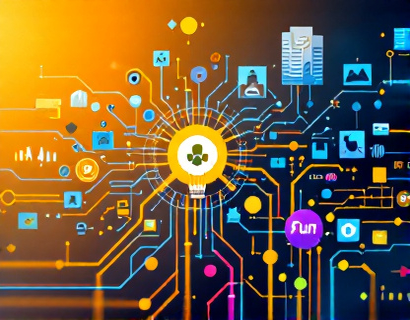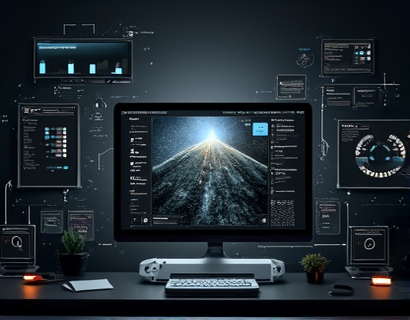Next-Gen Multi-Login Security: Simplify Digital Life with Advanced Online Authentication
In the digital age, managing multiple online identities has become a daunting task for tech-savvy individuals. The need for robust security measures that do not compromise on convenience is more critical than ever. This article delves into the realm of next-generation multi-login security solutions, exploring how advanced online authentication can streamline your digital life while ensuring your credentials remain safe and accessible. By leveraging cutting-edge technology, these solutions offer a balance between security and usability, making them ideal for those who value both protection and simplicity.
The traditional method of managing multiple logins involves remembering a multitude of usernames and passwords, each with its own set of rules and complexities. This not only increases the risk of password fatigue but also heightens the chances of security breaches. A study by Verizon's 2025 Data Breach Investigations Report highlighted that 81% of hacking-related breaches leveraged either stolen or weak passwords. This underscores the urgent need for a more sophisticated approach to online authentication.
Enter the realm of advanced online authentication solutions designed to address these challenges. These systems employ multi-factor authentication (MFA), biometric verification, and token-based access to create a robust security framework. MFA, for instance, requires users to provide two or more verification factors to gain access to a resource, making it significantly harder for unauthorized users to breach accounts. Biometric verification, such as fingerprint or facial recognition, adds an additional layer of security by utilizing unique physical characteristics.
One of the key benefits of these advanced solutions is their ability to simplify the login process. Gone are the days of juggling multiple passwords and dealing with forgotten credentials. Users can seamlessly access their various accounts using a single, secure method. This not only enhances user experience but also reduces the cognitive load associated with managing multiple logins. For tech-savvy individuals, this means more time to focus on productive activities rather than security concerns.
Let's explore how these advanced online authentication systems work. At the core of these solutions is a centralized authentication server that manages and verifies user credentials. When a user attempts to log in, the system prompts for initial authentication, such as a username and password. Upon successful verification, the system generates a unique token or uses biometric data to confirm the user's identity. This token or biometric data is then used to grant access to the requested resources, ensuring that each login attempt is thoroughly vetted.
The centralized nature of these systems also allows for easy management of user permissions and access levels. Administrators can assign different levels of access to various resources based on user roles, ensuring that sensitive information remains protected. This granular control is particularly beneficial in enterprise environments where multiple departments and users require access to different systems.
Security is, of course, the primary concern when dealing with online authentication. Advanced solutions employ state-of-the-art encryption techniques to protect data in transit and at rest. End-to-end encryption ensures that even if data is intercepted, it remains unreadable to unauthorized parties. Additionally, these systems often incorporate real-time monitoring and anomaly detection to identify and respond to potential security threats promptly. This proactive approach helps in mitigating risks before they can cause significant damage.
Another critical aspect of these solutions is their compatibility with various platforms and devices. In today's multi-device world, users expect a seamless experience across desktops, laptops, smartphones, and tablets. Advanced authentication systems are designed to be device-agnostic, ensuring that users can access their accounts securely from any device. This flexibility is crucial for maintaining productivity and security in a world where work and personal life often blur.
User experience is not compromised in the pursuit of security. These solutions are built with a user-centric approach, focusing on ease of use and accessibility. Intuitive interfaces and streamlined workflows make it simple for users to set up and manage their authentication preferences. For example, users can choose to receive authentication codes via SMS, email, or authenticator apps, depending on their preference and security needs. This customization ensures that users can select the method that best suits their lifestyle and security requirements.
Moreover, these advanced systems often include features that enhance convenience without sacrificing security. For instance, session management allows users to stay logged in across multiple devices for a specified period, provided the device remains secure. This feature is particularly useful for users who frequently switch between devices, such as switching from a desktop at work to a laptop at home. Additionally, automatic logout after a period of inactivity adds an extra layer of security, ensuring that unauthorized access is minimized.
The integration of artificial intelligence (AI) and machine learning (ML) further elevates the capabilities of these authentication systems. AI-driven analytics can detect patterns and anomalies in user behavior, flagging potential security threats in real-time. ML algorithms continuously learn from user interactions, adapting the security measures to better fit individual user profiles. This adaptive approach not only enhances security but also reduces false positives, ensuring a smoother user experience.
For organizations, implementing such advanced authentication solutions can lead to significant benefits beyond just improved security. By reducing the incidence of password-related issues, IT departments can allocate resources more efficiently. The decrease in support tickets related to forgotten passwords and unauthorized access translates to cost savings and higher employee satisfaction. Moreover, a strong security posture can enhance a company's reputation, instilling trust among customers and partners.
From a technical standpoint, these solutions are built on robust infrastructure to handle high volumes of authentication requests without compromising performance. Scalable cloud-based architectures ensure that the system can handle spikes in traffic, making them suitable for organizations of all sizes. The use of modern programming languages and frameworks ensures that these systems are not only secure but also maintainable and updatable, keeping pace with evolving security threats.
Privacy is another critical factor in the design of these authentication systems. Users are increasingly concerned about how their data is handled and protected. Reputable solutions adhere to strict privacy policies, ensuring that user data is stored securely and used only for authentication purposes. Compliance with regulations such as GDPR and CCPA is paramount, providing users with peace of mind regarding their data privacy.
In conclusion, next-generation multi-login security solutions offer a comprehensive approach to online authentication, combining robust security measures with user-friendly features. By leveraging advanced technologies such as MFA, biometrics, and AI, these systems provide a balance between protection and convenience. For tech-savvy individuals and organizations alike, adopting such solutions can significantly enhance digital security while simplifying the management of multiple online identities. As the digital landscape continues to evolve, these advanced authentication methods will play a pivotal role in safeguarding our online lives.










































